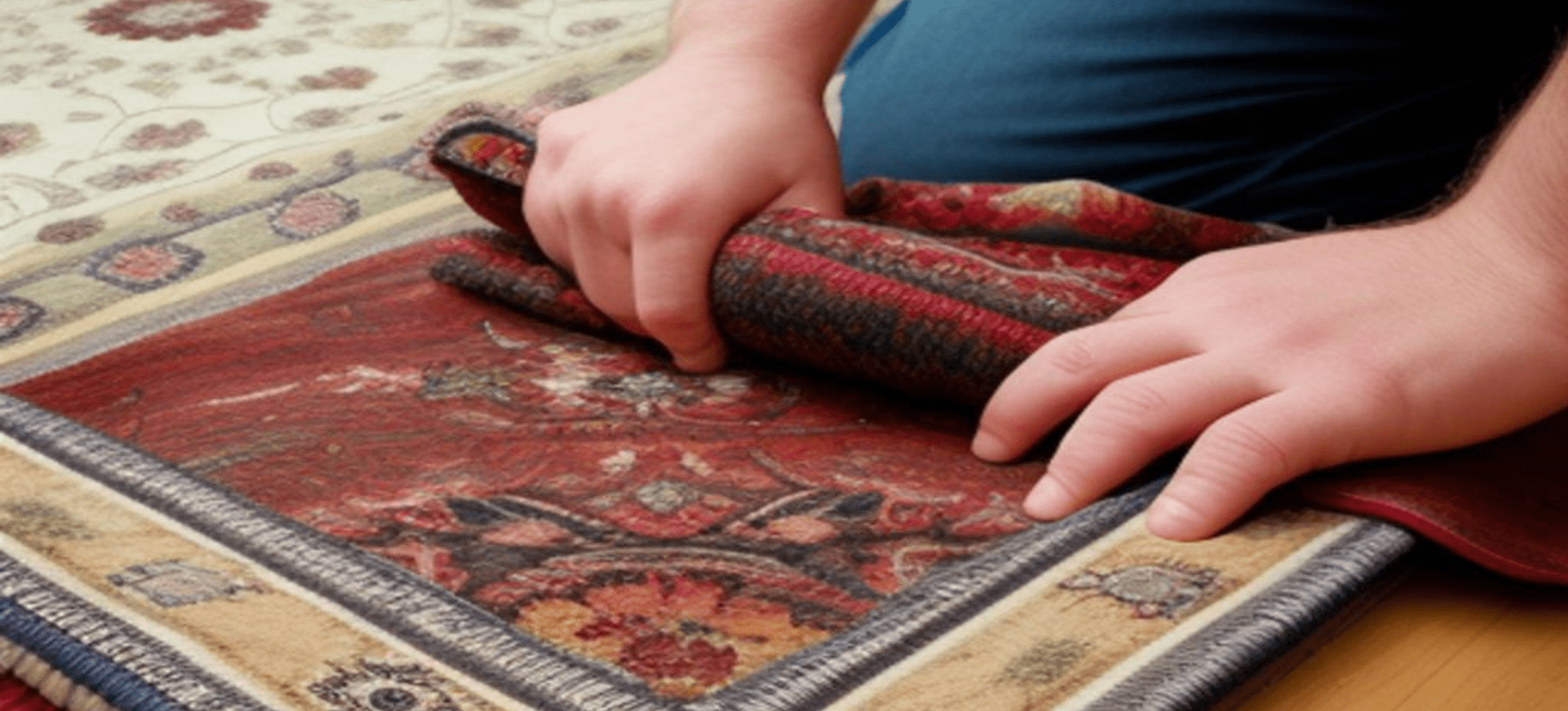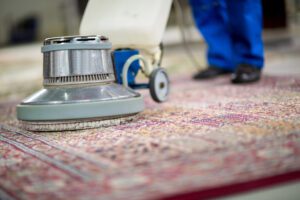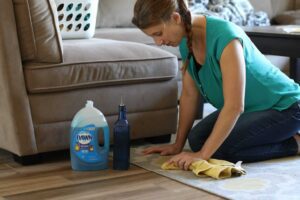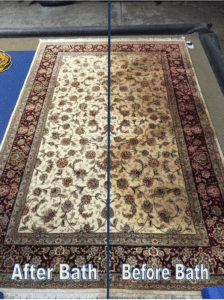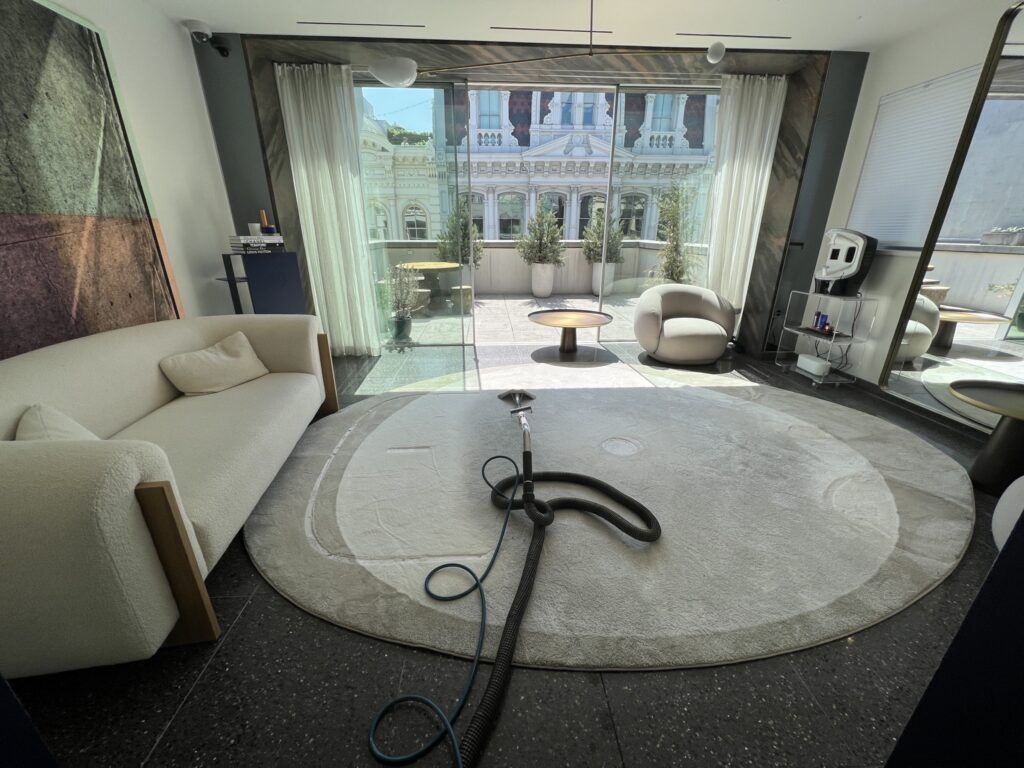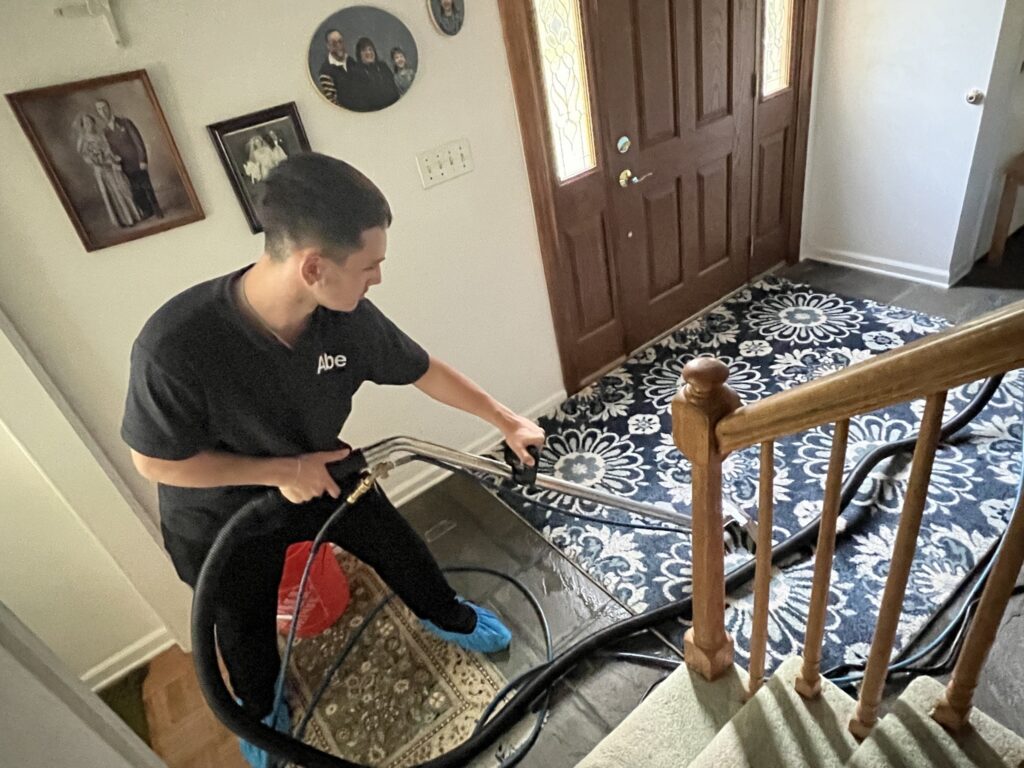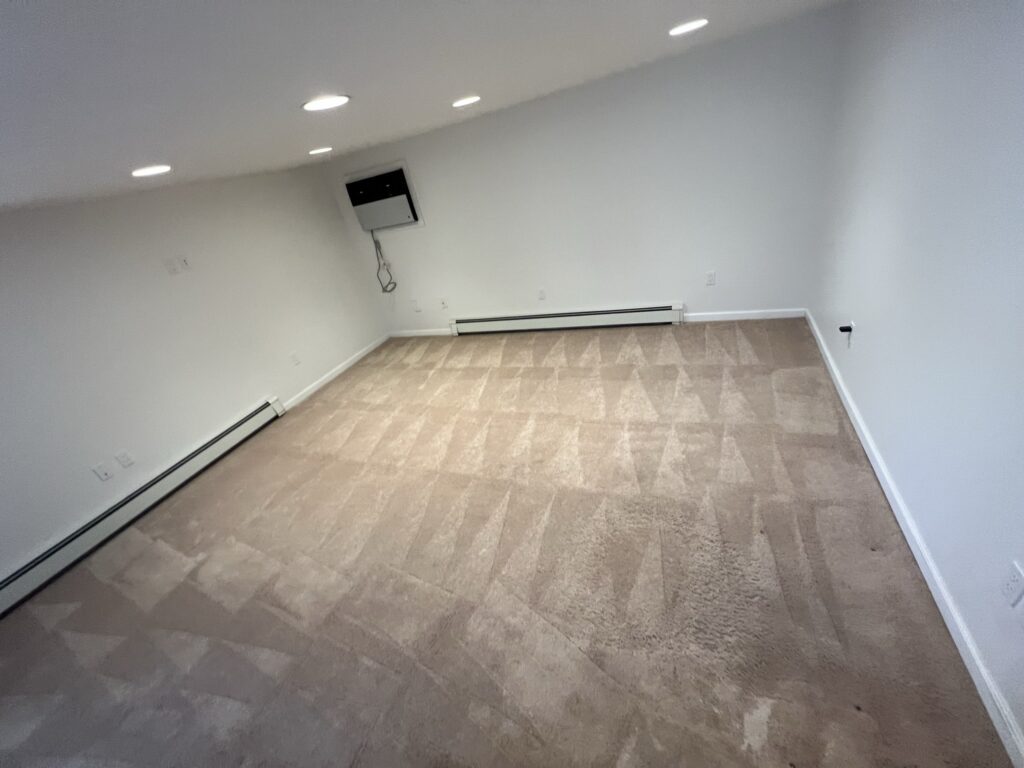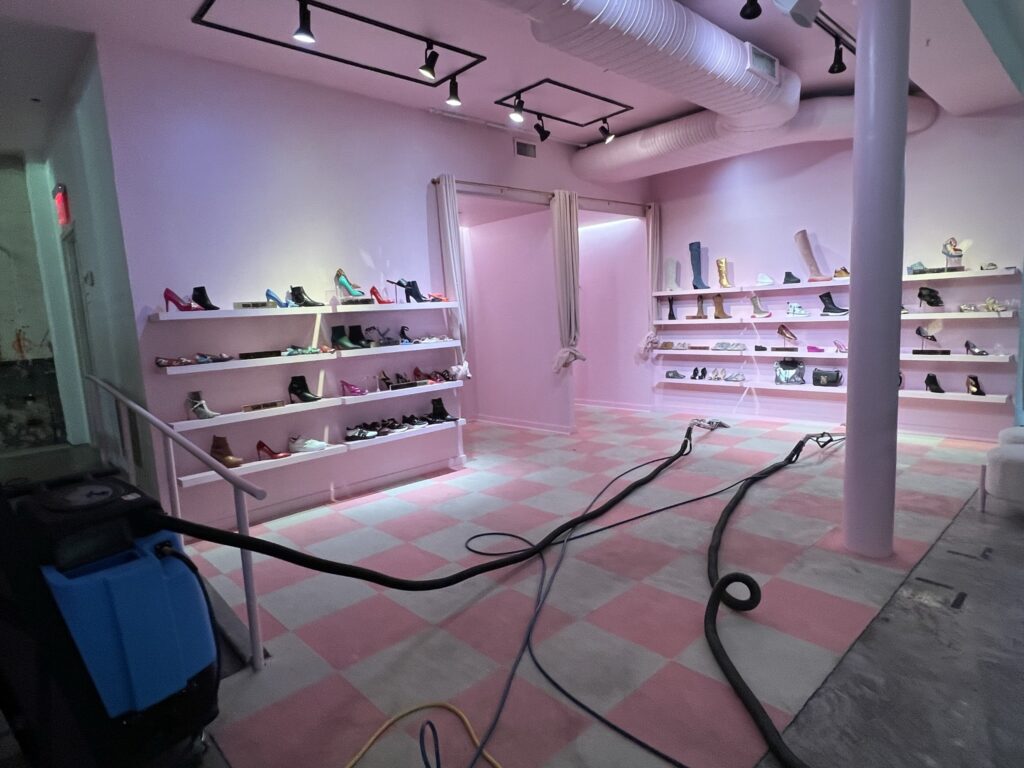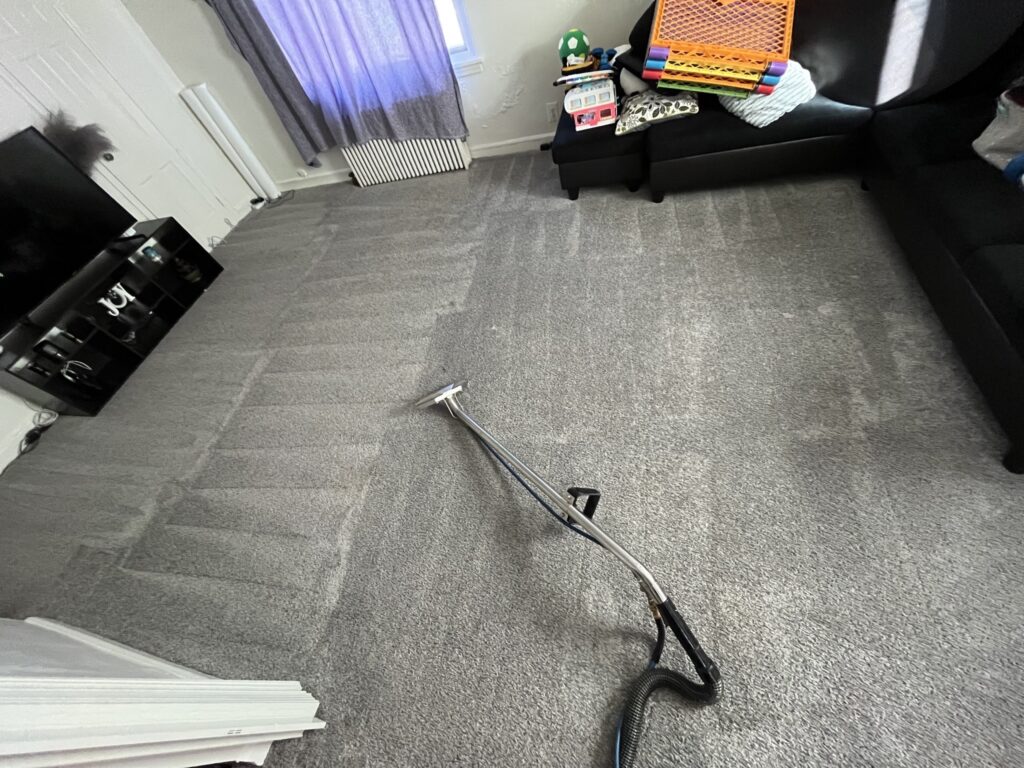Are you tired of your rug looking dull and dirty? It’s time for a deep clean! But how do you ensure that you clean your rug with care to avoid damaging it? In this article, we will guide you through the process of deep cleaning your rug while taking the necessary precautions to preserve its beauty and longevity.
With our expert tips and techniques, you’ll learn how to remove stains, eliminate odors, and restore the vibrancy of your rug. We’ll share step-by-step instructions on using household ingredients or gentle cleaning products to tackle dirt and grime. Whether you have a delicate Persian rug or a sturdy synthetic one, we’ve got you covered.
Our goal is to help you achieve a clean and fresh rug without causing any harm. We understand the value and sentimental attachment you may have to your rug, so we’re here to provide you with the best practices for deep cleaning, ensuring that your rug stays in pristine condition for years to come.
Transform your rug from dingy to dazzling with our careful and effective deep cleaning methods. Let’s get started!
The Importance of Deep Cleaning Your Rug
Regular cleaning can only do so much to maintain the appearance of your rug. Over time, dirt, dust, and stains accumulate deep within the fibers, making your rug look tired and worn out. Deep cleaning is essential to remove these deep-seated impurities and rejuvenate your rug.
Deep cleaning not only improves the aesthetics of your rug but also contributes to a healthier living environment. Dust mites, allergens, and bacteria can take up residence in your rug, causing allergies and respiratory issues. By deep cleaning your rug, you can eliminate these potential health hazards and create a cleaner and safer space for you and your family.
Furthermore, deep cleaning helps to prolong the lifespan of your rug. Regular maintenance can only do so much, but deep cleaning ensures that your rug remains in good condition for years to come. By removing dirt and grime that can cause fiber breakage and deterioration, you can extend the life of your rug and protect your investment.
Deep cleaning your rug may seem like a daunting task, but with the right tools and techniques, it can be a manageable and rewarding process. Let’s explore what you’ll need to get started.
Tools and Supplies Needed for Deep Cleaning
Before you begin deep cleaning your rug, gather the necessary tools and supplies to ensure a successful and efficient process. Here’s a list of items you’ll need:
- Vacuum cleaner with attachments: A vacuum cleaner is essential for removing loose dirt and debris from your rug before deep cleaning. Attachments such as a crevice tool and upholstery brush can help you reach all areas of your rug.
- Mild detergent or rug cleaner: Choose a mild detergent specifically formulated for rugs or a dedicated rug cleaner. Avoid using harsh chemicals that can damage the fibers of your rug.
- Bucket or spray bottle: Depending on the cleaning method you choose, you’ll need a bucket to mix the cleaning solution or a spray bottle for spot cleaning.
- Soft-bristled brush or sponge: A soft-bristled brush or sponge is necessary for agitating the cleaning solution into the rug fibers. Choose a brush or sponge with gentle bristles to avoid causing any damage.
- Clean, white towels or absorbent cloths: These are used for blotting and drying the rug after the cleaning process.
- Rubber gloves: Rubber gloves protect your hands from any cleaning chemicals and ensure a hygienic cleaning process.
Now that you have the necessary tools and supplies, let’s move on to preparing your rug for deep cleaning.
Preparing the Rug for Deep Cleaning
Before you begin the deep cleaning process, it’s important to prepare your rug to ensure the best possible results. Here’s what you need to do:
- Remove furniture: If your rug is placed in an area with furniture, move the furniture off the rug to access the entire surface. This will allow you to clean the rug thoroughly and prevent any damage to the furniture during the cleaning process.
- Vacuum the rug: Start by vacuuming the rug thoroughly to remove loose dirt, dust, and debris. Use the appropriate attachment for your vacuum cleaner to ensure you reach all areas, including the corners and edges of the rug.
- Check for colorfastness: Before applying any cleaning solution to your rug, it’s important to test for colorfastness. Choose an inconspicuous area of the rug, such as a corner, and apply a small amount of the cleaning solution. Blot the area with a clean white towel and check for any color transfer. If there is no color transfer, you can proceed with the cleaning process. If there is color transfer, it’s best to consult a professional rug cleaner.
Now that your rug is prepared, let’s dive into the step-by-step guide for deep cleaning your rug.
Step-by-Step Guide to Deep Clean Your Rug
Deep cleaning your rug requires a systematic approach to ensure that every inch of the rug is thoroughly cleaned. Follow these steps for a successful deep cleaning process:
- Choose a cleaning method: There are several methods you can choose from to deep clean your rug, depending on its type and the level of dirt and stains. The most common methods include shampooing, steam cleaning, and dry cleaning. Consult the manufacturer’s instructions or seek professional advice to determine the best method for your specific rug.
- Mix the cleaning solution: If you’re using a rug cleaner or mild detergent, follow the instructions on the packaging to mix the cleaning solution. Use a bucket or spray bottle, depending on the cleaning method you’ve chosen.
- Test the cleaning solution: Before applying the cleaning solution to your entire rug, it’s important to test it on a small, inconspicuous area. This will ensure that the solution doesn’t cause any adverse effects, such as discoloration or damage to the fibers.
- Apply the cleaning solution: Once you’ve confirmed the safety of the cleaning solution, apply it to the rug using a soft-bristled brush or sponge. Work the solution into the rug fibers, focusing on stained or heavily soiled areas. Avoid saturating the rug with excessive amounts of cleaning solution, as this can lead to prolonged drying times and potential damage.
- Agitate the solution: After applying the cleaning solution, use the brush or sponge to agitate the fibers gently. This will help to loosen dirt and stains, allowing the cleaning solution to penetrate deeper into the rug.
- Rinse the rug: Depending on the cleaning method you’ve chosen, you may need to rinse the rug to remove the cleaning solution. This can be done using a clean sponge or cloth soaked in water. Make sure to remove all traces of the cleaning solution to avoid any residue that can attract dirt and cause rapid re-soiling.
- Blot the rug: After rinsing, use clean, white towels or absorbent cloths to blot the rug and remove excess moisture. Avoid rubbing or scrubbing the rug, as this can damage the fibers and lead to fraying or matting.
- Dry the rug: Allow the rug to air dry completely before placing it back in its original position. Avoid exposing the rug to direct sunlight, as this can cause fading and discoloration. You can speed up the drying process by using fans or opening windows to promote airflow.
Congratulations! You’ve successfully deep cleaned your rug and restored its beauty and freshness. But what about those tough stains and persistent odors? Let’s explore some tips to tackle these common rug issues.
Tips for Removing Tough Stains and Odors
Stains and odors can be a nightmare to deal with, but with the right techniques, you can effectively remove them from your rug. Here are some tips to help you tackle tough stains and eliminate unpleasant odors:
- Act quickly: The key to removing stains is to act as soon as they occur. The longer a stain sits on your rug, the harder it becomes to remove. Blot the stain immediately with a clean, white towel to absorb as much of the liquid or substance as possible.
- Use a stain remover: For specific stains, such as red wine or coffee, you may need to use a stain remover. Choose a stain remover that is safe to use on your rug type and follow the instructions carefully. Apply the stain remover to the affected area and blot gently with a clean cloth.
- Blot, don’t rub: When removing stains, always remember to blot and not rub. Rubbing can spread the stain and damage the rug fibers. Use a gentle blotting motion with a clean cloth or sponge to lift the stain from the rug.
- Try natural stain removers: If you prefer natural alternatives, there are several household ingredients that can effectively remove stains. For example, a mixture of vinegar and water can be used to tackle pet stains, while baking soda can help remove odors. Always test these natural remedies on a small, inconspicuous area of the rug before using them on the entire stain.
- Eliminate odors: To remove unpleasant odors from your rug, sprinkle baking soda liberally over the entire surface. Let it sit for several hours or overnight to absorb the odors. Vacuum the rug thoroughly to remove the baking soda and leave your rug smelling fresh and clean.
- Consider professional stain removal: For stubborn stains that you can’t remove on your own, it’s best to consult a professional rug cleaner. They have the expertise and specialized equipment to tackle even the toughest stains, ensuring your rug looks its best.
By following these tips, you can effectively remove stains and odors from your rug, leaving it looking and smelling as good as new. But the deep cleaning process doesn’t end there. Let’s explore how to properly dry and finish your rug.
Drying and Finishing the Deep Cleaning Process
Drying your rug properly is crucial to prevent mold and mildew growth, as well as to avoid any damage to the rug fibers. Here’s what you need to do to ensure a thorough drying process:
- Remove excess moisture: After blotting the rug with clean, white towels, you may still have excess moisture trapped within the fibers. Use a dry towel or absorbent cloth to remove as much moisture as possible. You can also use a wet-dry vacuum cleaner to extract any remaining water.
- Air dry the rug: Find a well-ventilated area to air dry your rug. Hanging it outside is not recommended, as direct sunlight can cause fading and discoloration. Instead, lay the rug flat on a clean surface, preferably on a non-slip mat or towels to protect the floor. Flip the rug occasionally to ensure even drying.
- Speed up the drying process: If you need to speed up the drying process, you can use fans or open windows to promote airflow. Avoid using heaters or placing the rug near heat sources, as this can cause shrinkage or damage to the fibers.
- Fluff and groom the rug: Once the rug is completely dry, fluff the fibers by gently brushing or vacuuming the rug in the direction of the pile. This will help to restore its original appearance and ensure a soft and fluffy texture.
Now that your rug is deep cleaned, dried, and groomed, it’s important to maintain its cleanliness to prolong its lifespan and keep it looking its best. Let’s explore some tips for maintaining your rug.
Maintaining the Cleanliness of Your Rug
Regular maintenance is key to keeping your rug clean and fresh between deep cleaning sessions. Here are some tips to help you maintain the cleanliness of your rug:
- Vacuum regularly: Regular vacuuming helps to remove loose dirt, dust, and debris before they settle deep into the rug fibers. Aim to vacuum your rug at least once a week, or more frequently in high-traffic areas.
- Use doormats and runners: Place doormats at the entrances of your home to trap dirt and prevent it from being tracked onto your rug. Runners or area rugs can also be placed in high-traffic areas to protect your rug from excessive wear and tear.
- Rotate the rug: To ensure even wear and prevent uneven fading, rotate your rug every six months. This will distribute the foot traffic and sunlight exposure, prolonging the life of your rug.
- Address spills immediately: Accidents happen, so it’s important to address spills and stains as soon as they occur. Blot the spill immediately with a clean, white towel to prevent it from seeping into the fibers. Follow the appropriate stain removal techniques mentioned earlier to remove the stain completely.
- Avoid heavy furniture: Heavy furniture can leave permanent indentations on your rug. Use furniture pads or coasters to distribute the weight and prevent damage to the rug fibers.
By following these maintenance tips, you can keep your rug looking clean and vibrant, reducing the frequency of deep cleaning sessions and prolonging the life of your rug.
Hiring Professional Rug Cleaning Services
While deep cleaning your rug on your own can be a rewarding and cost-effective process, there may be instances where professional help is needed. Professional rug cleaning services have the expertise, specialized equipment, and cleaning solutions to handle delicate and valuable rugs.
If you have a valuable or antique rug, or if you’re unsure about the appropriate deep cleaning method for your rug type, it’s best to consult a professional. They can assess the condition of your rug, recommend the best cleaning method, and ensure that your rug is deep cleaned without causing any damage.
Professional rug cleaning services can also provide additional treatments such as stain protection or fiber restoration, further enhancing the appearance and longevity of your rug. While these services come at an additional cost, they can be invaluable for preserving the beauty and value of your rug.

